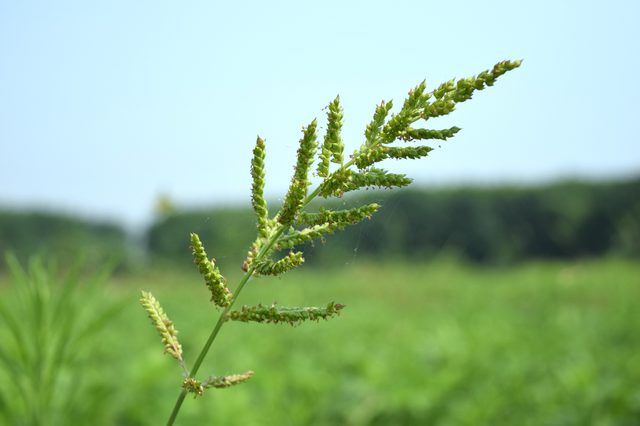Bulbs
Flower Basics
Flower Beds & Specialty Gardens
Flower Garden
Garden Furniture
Garden Gnomes
Garden Seeds
Garden Sheds
Garden Statues
Garden Tools & Supplies
Gardening Basics
Green & Organic
Groundcovers & Vines
Growing Annuals
Growing Basil
Growing Beans
Growing Berries
Growing Blueberries
Growing Cactus
Growing Corn
Growing Cotton
Growing Edibles
Growing Flowers
Growing Garlic
Growing Grapes
Growing Grass
Growing Herbs
Growing Jasmine
Growing Mint
Growing Mushrooms
Orchids
Growing Peanuts
Growing Perennials
Growing Plants
Growing Rosemary
Growing Roses
Growing Strawberries
Growing Sunflowers
Growing Thyme
Growing Tomatoes
Growing Tulips
Growing Vegetables
Herb Basics
Herb Garden
Indoor Growing
Landscaping Basics
Landscaping Patios
Landscaping Plants
Landscaping Shrubs
Landscaping Trees
Landscaping Walks & Pathways
Lawn Basics
Lawn Maintenance
Lawn Mowers
Lawn Ornaments
Lawn Planting
Lawn Tools
Outdoor Growing
Overall Landscape Planning
Pests, Weeds & Problems
Plant Basics
Rock Garden
Rose Garden
Shrubs
Soil
Specialty Gardens
Trees
Vegetable Garden
Yard Maintenance
Products That Control Nutsedge
Examples of products that control nutsedge weeds, rates of application, mixing instructions and precautions.
The wispy, grasslike foliage of nutsedge (Cyperus spp.) gives a false impression of this weed's formidable underground presence. Doggedly anchored in the ground, nutsedge plants are pervasive because of their tubers. Each nutsedge tuber can potentially produce 7,000 new tubers and 1,900 plants -- in only a year's time. Nutsedge can be controlled, though.
The two primary nutsedge weed species are purple nutsedge (Cyperus rotundus), a perennial in U.S. Department of Agriculture plant hardiness zones 9 through 11, and yellow nutsedge (Cyperus esculentus, USDA zones 8 through 10a).
Right Product for the Right Weed

Not all weedkillers kill all weeds. The primary categories of weeds are broadleaf, grassy and sedges. Although nutsedge looks grasslike, its triangular stems are characteristic of sedges. When you look for a product to kill nutsedge, keep in mind that herbicides labeled for broadleaf and grassy weeds won't do the job.
Non-Selective Herbicides

True to its name, a non-selective herbicide does not discriminate among the plants it damages or kills: It's deadly or damaging to all plants. When you spray nutsedge with a non-selective herbicide, the plant's tissues absorb the chemicals, which then move throughout the plant to kill it. Although the chemicals travel down through the root system to the tubers, they typically don't kill the tubers. You'll see dead weeds, but the tenacious tubers spring to life again by resprouting new foliage. Another challenge when using a non-selective herbicide is that weeds such as nutsedge grow in turfgrass. When you spray weeds with non-selective herbicide, it will kill the weeds and the grass around them.
Tip
A non-selective herbicide is a suitable choice when you're trying to eliminate all the grass, weeds and other plants in an area but not when you're trying to spot-treat weeds in grassy or garden areas.
Non-selective herbicides include:
Glyphosate. Research in the Texas A&M AgriLife Extension test gardens revealed that products containing the chemical compound glyphosate were the most effective in providing long-term control of nutsedge. Products with this compound include Roundup, which is available in premixed, ready-to-use formulations. Apply glyphosate until all surfaces of the plant you want to kill are wet. Don't get the herbicide in your eyes, and wash your hands with soap and water after using the product.
Glufosinate-ammonium. Products such as Finale that contain glufosinate-ammonium as the active ingredient are also effective in killing nutsedge. Typically, a product that is
11.33 percent glufosinate-ammonium has a label that directs users to mix 3 to 4 ounces of the product with 1 gallon of water. Use a handheld or backpack sprayer to spray the mixture on the plant you want to kill until all of the plant's surfaces are wet, but not to the point the mixture runs off the plant.
Don't use these chemicals in irrigation systems, and don't let grazing or other animals feed in treated areas.
Warning
Observe all brand-specific label recommendations and cautions.
Selective Herbicides

Weedkillers that kill certain plants while leaving others unharmed are called selective herbicides. The benefit of using a selective herbicide on nutsedge is that -- when the product is used properly -- you can spot-spray it on nutsedge weeds in your lawn without harming your grass.
Imazaquin is a selective herbicide. You can use a premixed herbicide with the active ingredient imazaquin, such as Image, in a hose-end sprayer. That device makes quick and simple work of spraying a lawn to get rid of nutsedge. When you turn on the water, it creates a suction with the attached sprayer and siphons the herbicide chemicals, which mix with the water at the proper dilution rate. Within seven days, water your treated lawn thoroughly to flush the chemicals into the root zone. Don't use an imazaquin product in vegetable gardens or in areas where you want to plant bedding annuals within the following year. Apply it to only a thickly established lawn. Typically, 1 quart of a premixed herbicide containing imazaquin treats 8,000 square feet of lawn.
Tip
You won't see immediate results after applying imazaquin because it takes one to two weeks for treated nutsedge to turn yellow and wilt, and it takes three to five weeks for the nutsedge to die.
Warning
Don't use imazaquin on tall fescue grass (Schedonorus arundinaceus, USDA zones 4 through 7).
Halosulfuron-methyl is another selective herbicide. Some herbicide products containing halosulfuron-methyl come in premeasured pouches; they include SedgeHammer+, formerly called Manage. Simply mix one pouch -- 0.5 ounce -- of the product with 1 gallon of water, and spray the mixture on nutsedge until the plant is saturated. For a persistent nutsedge plant, you can make a second application six to 10 weeks after the first treatment. Don't mow your lawn two days before and after spraying the herbicide.
Warning
Wear a long-sleeved shirt, long pants, gloves, socks, closed-toe shoes and protective eyewear when mixing and applying chemical herbicides.